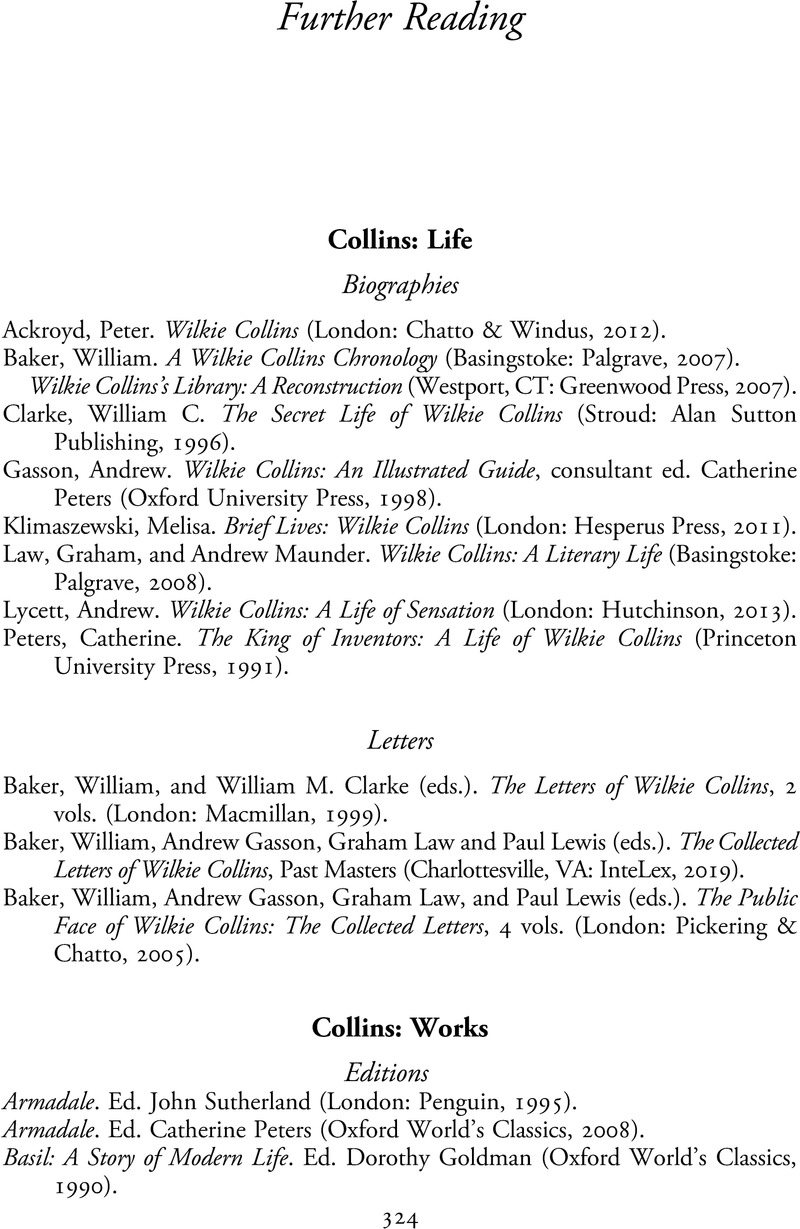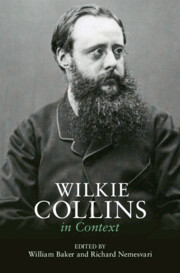Book contents
- Wilkie Collins in Context
- Wilkie Collins in Context
- Copyright page
- Contents
- Illustrations
- Notes on Contributors
- Preface
- Chronology
- Abbreviations
- Frontispiece
- Part I Life and Works
- Part II Critical Response and Afterlife
- Part III Contexts: Literary
- Part IV Contexts: Cultural and Social
- Further Reading
- Index
- References
Further Reading
Published online by Cambridge University Press: 27 July 2023
- Wilkie Collins in Context
- Wilkie Collins in Context
- Copyright page
- Contents
- Illustrations
- Notes on Contributors
- Preface
- Chronology
- Abbreviations
- Frontispiece
- Part I Life and Works
- Part II Critical Response and Afterlife
- Part III Contexts: Literary
- Part IV Contexts: Cultural and Social
- Further Reading
- Index
- References
Summary

- Type
- Chapter
- Information
- Wilkie Collins in Context , pp. 324 - 331Publisher: Cambridge University PressPrint publication year: 2023



